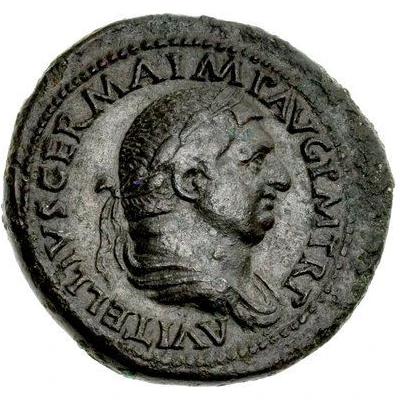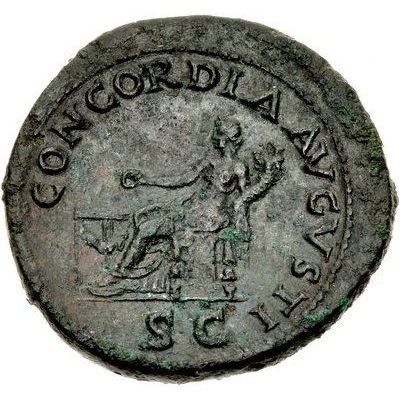Dupondius - Vespasian EX S C OB CIV SER
70 year| Bronze | - | - |
| Issuer | Rome › Roman Empire (27 BC - 395 AD) |
|---|---|
| Emperor | Vespasian (Titus Flavius Vespasianus) (69-79) |
| Type | Standard circulation coin |
| Year | 70 |
| Value | 1 Dupondius = ⅛ Denarius |
| Currency | Denarius, Reform of Augustus (27 BC – AD 215) |
| Composition | Bronze |
| Shape | Round (irregular) |
| Technique | Hammered |
| Demonetized | Yes |
| Updated | 2024-10-06 |
| Numista | N#248889 |
|---|---|
| Rarity index | 100% |
Reverse
Legend in three lines in oak-wreath.
Script: Latin
Lettering: EX S C OB CIV SER
Translation:
Ex Senatus Consultum. Ob Cives Servatos.
By decree of the senate. For saving the citizens.
Comment
Source: Online Coins of the Roman Empire (OCRE)Interesting fact
The Dupondius was a bronze coin introduced by the Roman Empire during the reign of Emperor Vespasian (AD 69-79) as a replacement for the earlier bronze coin, the sestertius. The name "Dupondius" is derived from the Latin word "dupondius," meaning "two pounds," likely referring to the coin's value, which was equivalent to two Roman pounds. The coin was widely used throughout the Roman Empire and remained in circulation until the late 3rd century AD. This particular coin, minted in Rome in 70 AD, features an image of Emperor Vespasian on the obverse (front) side, with the inscription "EX S C OB CIV SER" meaning "By the Senate and People of Rome" in Latin. The reverse (back) side of the coin depicts a personification of the Roman Empire, represented by a female figure holding a shield and a spear, surrounded by the inscription "ROMAE AETERNAE" meaning "Eternal Rome." Overall, the Dupondius - Vespasian (EX S C OB CIV SER) (70) coin is an interesting piece of history that provides insight into the monetary system and cultural practices of ancient Rome during the 1st century AD.

